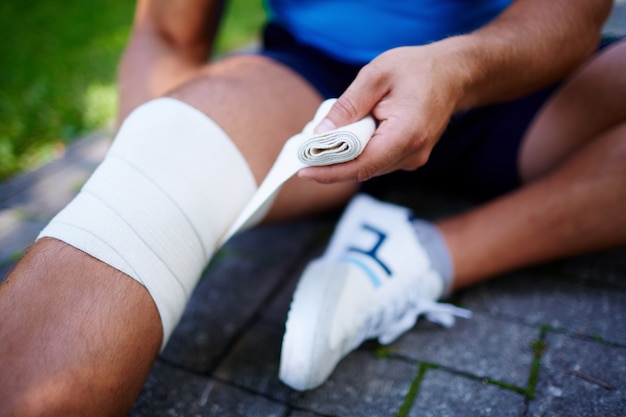In the medical field, wound care is an essential part of the recovery process. Using the proper bandages for wound dressing is essential to a quick and trouble-free healing process. It becomes clear that not all bandages are made equal as we delve into the nuances of wound care. Each variety fulfills a distinct function, and selecting the appropriate one can have a big influence on the healing process.
Bandages for wound dressings are available in a variety of shapes and sizes, each tailored to suit a specific kind of wound and its needs. The sterile gauze bandage is among the most widely used kinds. Wounds that drain moderately to severely are best treated with these permeable, absorbent bandages. Their porosity facilitates sufficient airflow, which fosters a healing environment and effectively absorbs surplus exudate.
Hydrocolloid bandages are a common option for wounds that need a little extra defense and moisture retention. The moist environment that these dressings produce promotes cell growth and quickens the healing process. They also lower the danger of infection by forming a barrier of defense against outside pollutants.
Adhesive tapes or strips are useful when a more firmly adhered dressing is required. These are especially helpful in sealing minor cuts and supporting the healing skin. They are appropriate for joints and places that are subjected to regular motion because of their flexibility, which facilitates easy movement.
Bandages made of silicone are becoming more and more popular because they reduce scarring. These dressings form a protective layer that helps preserve skin suppleness and lessens hypertrophic scarring by softly adhering to the skin. Silicone bandages are frequently advised for burn scars and post-operative wounds.
The stage of wound healing influences the choice of bandage for wound dressing. Seaweed-based alginate dressings are especially helpful for early-stage wounds that discharge a lot of fluid. They create a gel-like substance that takes on the shape of the wound as they absorb fluids, which helps to create the best possible healing environment.
The development of antimicrobial bandages has transformed wound treatment in recent years. These bandages actively fight bacteria and lower the risk of infection since they are infused with substances like silver or iodine. Wounds that are more susceptible to microbial contamination benefit most from them.
Correct application is just as vital as the type of bandage. It is essential to completely clean and disinfect the area before applying a dressing to a wound. For best results, clean hands should be used to apply the bandage and it should be secured snugly but not too tightly. It is essential to follow the healthcare provider's advice and change the bandage on a regular basis in order to promote healing and prevent infections.
In summary, there are many different aspects and facets to the field of wound dressing bandages. Making the right bandage choice, taking the healing stage into account, and being aware of the unique requirements of a wound are all essential to a successful recovery. Making educated judgments about wound care requires cooperation between patients and healthcare providers, which will ultimately lead to a more seamless healing process.


No comments yet